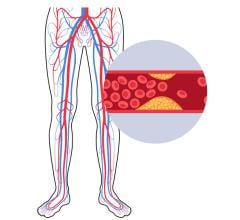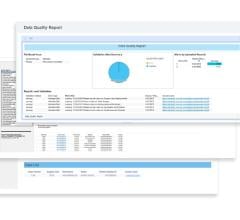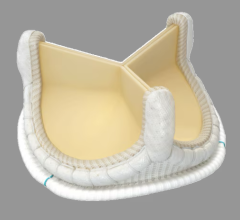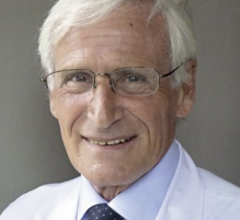October 17, 2007 — Patients with heart disease who undergo coronary angioplasty have an equivalent risk of death and heart attack as patients who undergo coronary bypass surgery, according to Stanford University School of Medicine researchers.
The analysis is the largest comparison of bypass surgery and angioplasty, two of the most common major medical procedures performed in North America.
The researchers also found that the survival rates for bypass surgery and angioplasty were similar for patients with diabetes, refuting previous reports that angioplasty was associated with a significantly higher risk of death among diabetic patients.
“It is reassuring that the long-term safety of these two procedures is roughly the same,” said senior author Mark Hlatky, M.D., professor of health research and policy and of cardiovascular medicine. “Patients and their doctors can have a more informed discussion about which procedure should be done, based on other outcomes that are important to the patient.”
The study, which was funded by the Agency for Healthcare Research and Quality and conducted by the Stanford-UCSF Evidence-based Practice Center, is published in the Oct. 16 advance online issue of Annals of Internal Medicine.
Two types of medical interventions are available to patients with coronary artery disease, which affects about 15 million Americans. One is bypass surgery, in which surgeons take a healthy blood vessel from another part of the body to create a detour around the blocked part of the coronary artery. The other is angioplasty, in which a tiny balloon is used to open a blocked artery; a mesh tube called a stent is often inserted to hold open the artery after the procedure.
Bypass surgery is the preferred treatment for patients with blockages in three arteries, while angioplasty is typically used for those patients with single-vessel disease. Patients with heart disease between these extremes are candidates for either procedure, but Hlatky said it’s not always clear which is the best treatment choice.
To gain a better understanding of the differences between the two procedures, Hlatky and his colleagues analyzed data from 23 randomized clinical trials that compared treatments for patients with mid-range coronary disease. The studies involved nearly 10,000 patients in Europe and the United States; 4,944 patients were randomly assigned to surgery and 5,019 patients were randomly assigned to angioplasty.
After reviewing the data, the researchers determined that the procedural survival rate for the two was virtually the same—98.2 percent for bypass surgery and 98.9 percent for angioplasty. Bypass surgery was, however, associated with a small but significantly greater risk of stroke within 30 days of the procedure.
Long-term survival rates were comparable, with about 90 percent of patients living five years after either procedure, as was the risk of post-procedure heart attack. About 12 percent of surgery patients and 10.9 percent of angioplasty patients had a heart attack within five years.
The researchers also looked specifically at patients with diabetes, a key risk factor for coronary artery disease, and found no difference in survival rates between the two procedures. Hlatky said this was surprising, given the 1995 results from the Bypass Angioplasty Revascularization Investigation by the National Institutes of Health. The BARI study showed that diabetic patients who underwent bypass surgery had a higher five-year survival rate than those who had angioplasty.
“A lot of patients with diabetes were worried about angioplasty after the BARI finding came out,” said Hlatky. “But after reviewing all the published data, we didn’t see a significant difference in survival rates between these procedures.”
Among the researchers’ other findings, bypass surgery led to fewer repeat procedures—9.8 percent of bypass patients had repeat procedures after five years, compared with 46.1 percent of patients who had angioplasty without a stent and 40.1 percent who had angioplasty with a stent. Bypass surgery was also found to be more effective than angioplasty in relieving chest pain known as angina.
Hlatky said once patients and doctors are sure there is no major difference in the risk of death and heart attacks between the two procedures, they can turn their attention to more subjective outcomes, such as control of angina, patient concern about major surgery or about a stent, and the chance of needing a second procedure. “In many ways, it makes the decision a little easier,” he said.
The authors noted that their analysis did not include angioplasties involving stents coated with drugs that are released over time, which may reduce the chance that arteries will become clogged again. Because these drug-eluting stents are relatively new, clinical trials are still ongoing and have not yet been published. However, Hlatky said the comparative effectiveness of bypass surgery and drug-eluting stents should not differ dramatically from the findings of this study.
The lead author of the study is senior research scientist Dena Bravata, M.D. Eight other Stanford researchers collaborated with Hlatky and Bravata on the study.
Source: Standford School of Medicine, adapted from an article written by Michelle Brandt
For more information: mednews.stanford.edu


 January 24, 2025
January 24, 2025 









